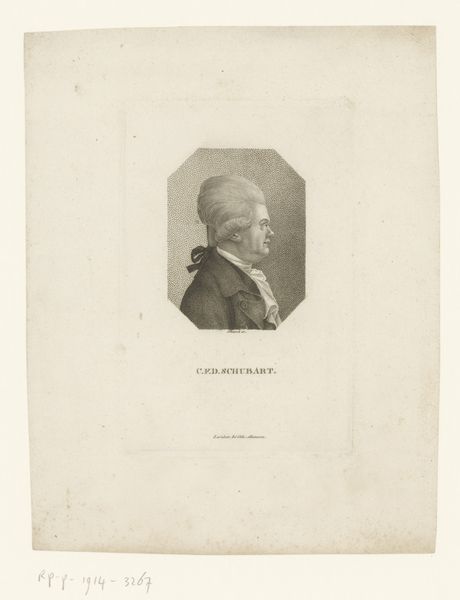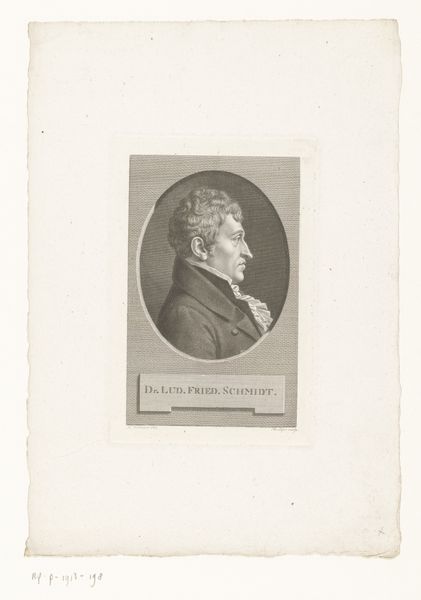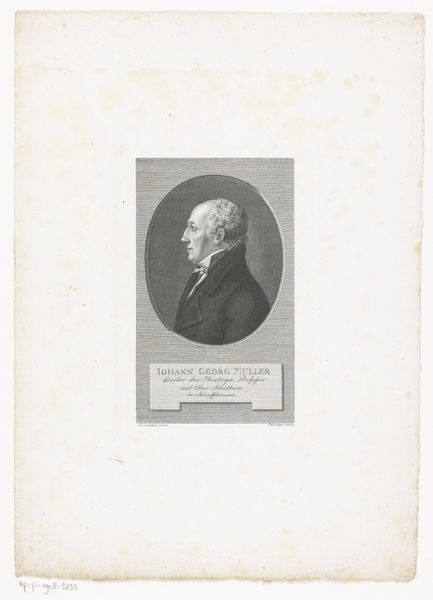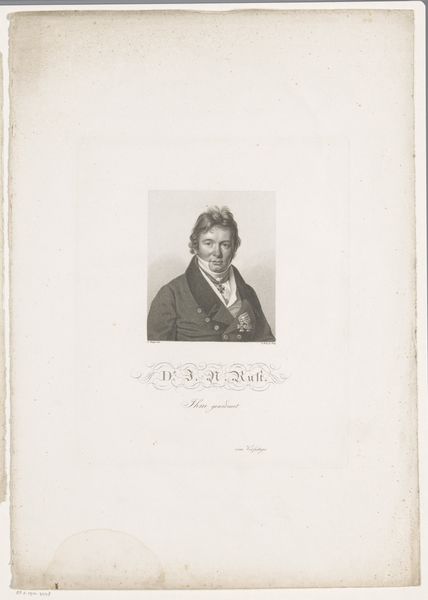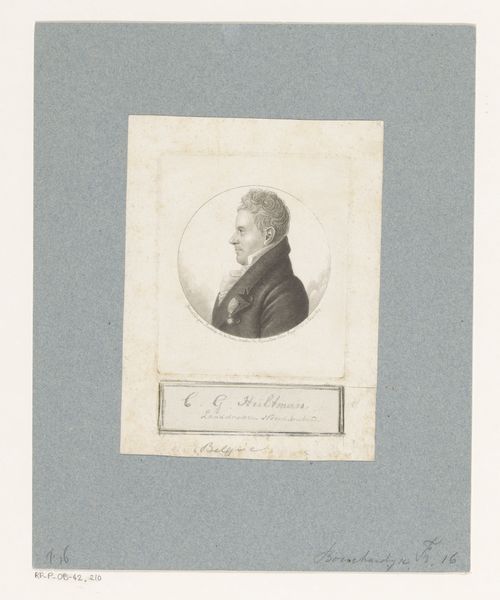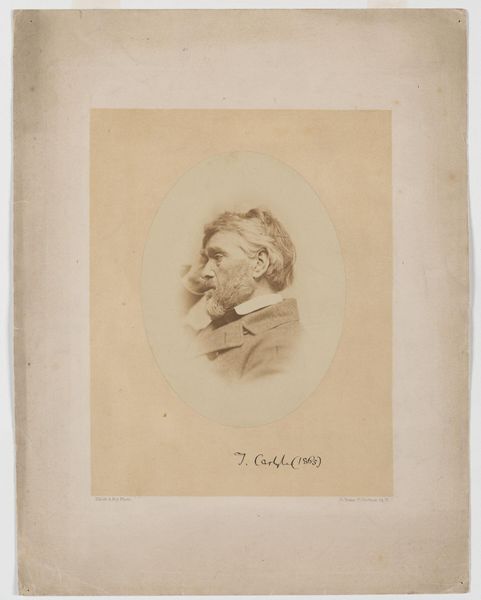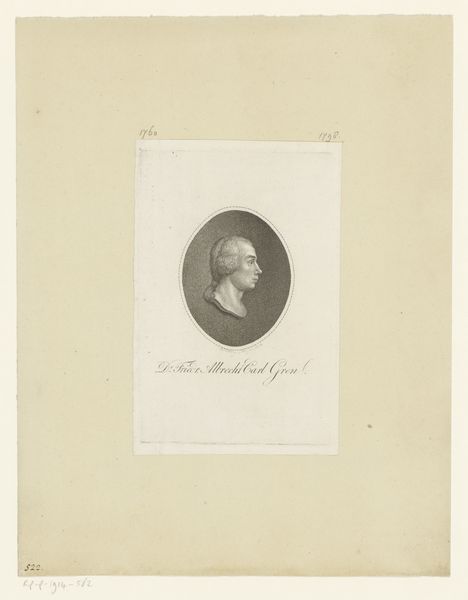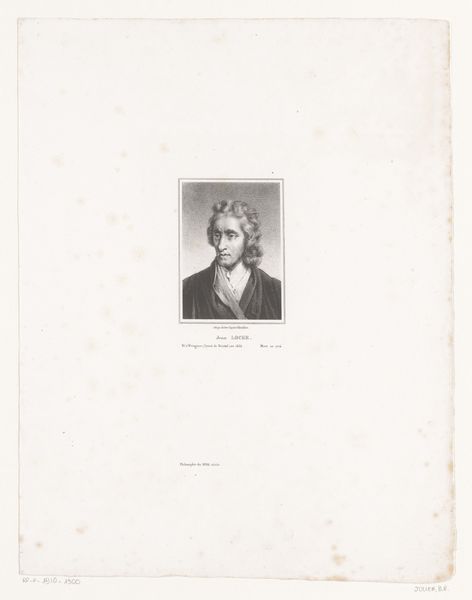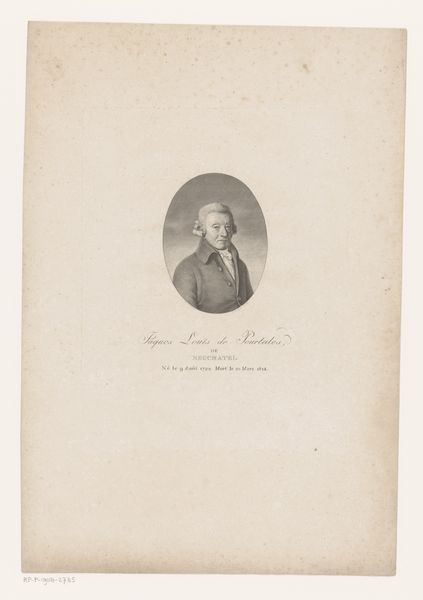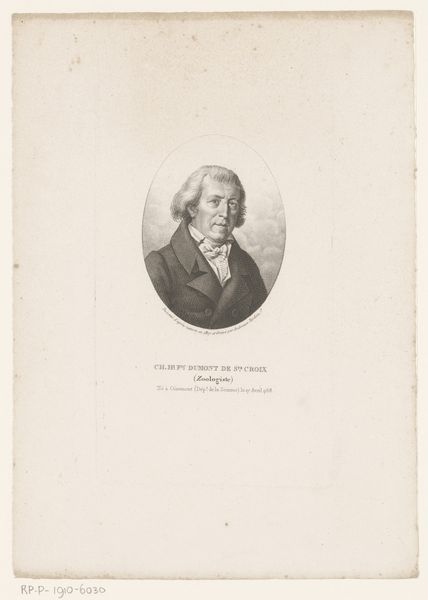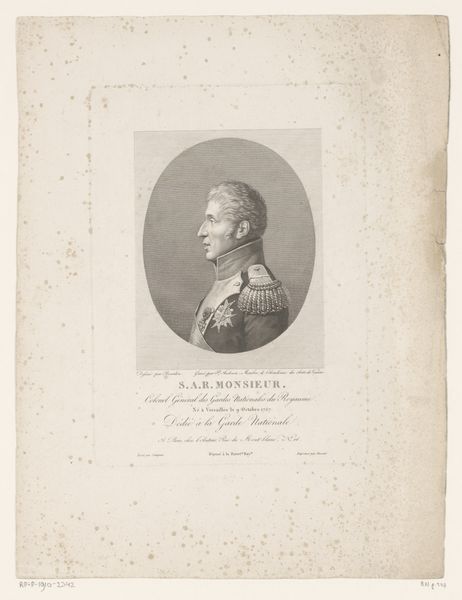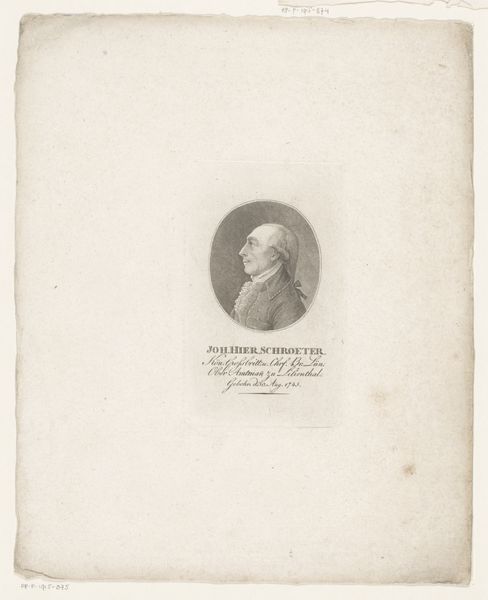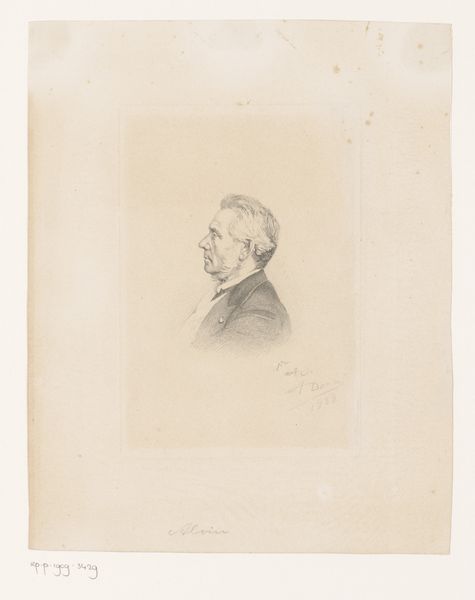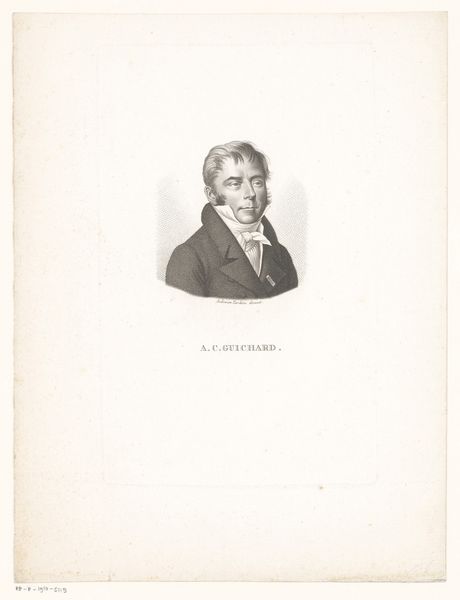
#
pencil drawn
#
photo of handprinted image
#
aged paper
#
light pencil work
#
photo restoration
#
light coloured
#
old engraving style
#
ink colored
#
watercolour illustration
#
watercolor
Dimensions: height 185 mm, width 124 mm
Copyright: Rijks Museum: Open Domain
Curator: Up next, we have Friedrich Wilhelm Bollinger's "Portret van Gustaf Mauritz Armfelt," created sometime between 1818 and 1832. What’s your first take on this work? Editor: Immediately, the delicate pencil work and aged paper evoke a sense of quiet contemplation. The octagonal frame enclosing the subject adds to that formality, don't you think? Curator: It does indeed. The portrait is very much of its time. Armfelt was a controversial figure, a Finnish-Swedish nobleman who served both the Swedish and Russian empires, a sign of tumultuous politics. Consider the careful placement of text and lines to convey both status and likeness. Editor: Exactly. Bollinger’s treatment really reinforces this calculated portrayal. The lines are sharp but soft in application. Observe the fine details, particularly around the collar, but more specifically how the rest of the subject seems slightly washed over, in shadow, and contained to only the face. This could signify some darkness beneath the nobility portrayed. Curator: Perhaps Bollinger is inviting us to consider the constructed nature of identity. Note the almost idealized profile and compare it with documented accounts of Armfelt’s political maneuvering, there's a palpable tension, no? Editor: Without a doubt. The image actively creates a separation for the face in particular. Bollinger isolates his expression and, as you indicate, highlights the persona that Armfelt himself crafted, even when evidence proves that facade’s limitations. It becomes a social commentary in visual form. Curator: Precisely! And perhaps, it gently interrogates the very nature of portraiture, showing it to be an endeavor of both historical record and personal agency. It really exemplifies the moment from whence it comes. Editor: Absolutely. Looking closer has given me a deeper appreciation for both its artistry and the social currents it reflects. It moves far beyond just being a representation of this individual, becoming a critical exploration of how such figures are viewed.
Comments
No comments
Be the first to comment and join the conversation on the ultimate creative platform.
